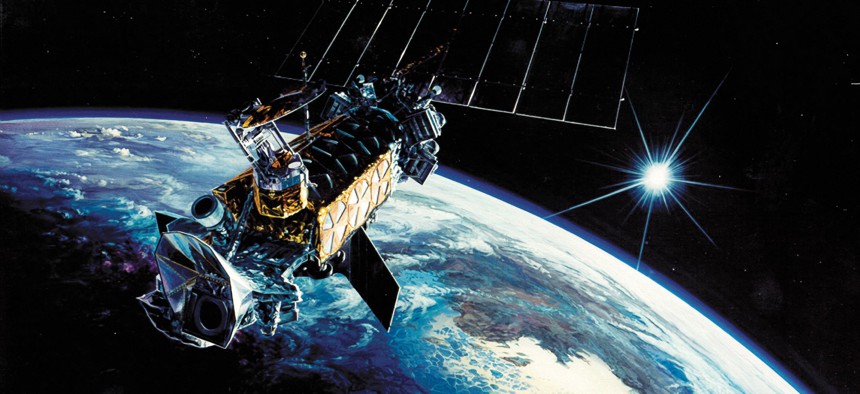
Defense Meteorological Satellite Program U.S. Air Force
The US Military Should Not Be Doubling Down on Space
Satellites are only getting harder to defend. The Pentagon needs to find a better way to do its C4ISR and precision-navigation-timing missions.
Yes, a #SpaceForce is a dumb idea, but not because @realDonaldTrump said it. The U.S. military has real problems in space and a Space Force is likely to make them worse, not better.
Space is "congested, contested, and competitive" — as many have pointed out — and the U.S. advantages in space are waning. But responding by creating a Space Force is building a castle on a foundation of sand.
Space is an inherently vulnerable and offense-dominant domain. Satellites move through predictable orbits. There simply aren't many good options for space hardening/defenses.
Defenders can add fuel to a satellite to make it mobile and move and change orbits, but more fuel adds weight and there is no easy way to refuel the satellite once in orbit. The same applies for defenses or armor. Defenders pay for all of that weight in launch costs. Defenders can make satellites stealthy-ish, but if even amateur observers can find secret military satellites, surely nation-state adversaries can. And even if satellites remain hidden, they're still vulnerable to debris in low earth orbit, a growing problem that isn't getting better.
Related: Pentagon To Start Creating Space Force — Even Before Congress Approves It
Related: Pentagon Delays Space Force Report
The reality is that satellites are vulnerable to attack -- through both kinetic and non-kinetic means from lasers, electronic warfare, and cyber -- and there is no good way to fix this. America has built a military that is heavily dependent on a global C4ISR [command, control, communications, computers, intelligence, surveillance, reconnaissance] architecture that runs through space — the eyes and nervous system of the Joint Force. The United States was able to do this because for a long time no one contested the U.S. in space, but that era is over.
Space is no longer a unique advantage; it is now a unique vulnerability. Space is the American military's Achilles heel. The United States need to mitigate that vulnerability, not double down on it. Instead of focusing on the domain — space — the Pentagon should be focused on the mission: global C4ISR. The U.S. need a global C4ISR and precision-navigation-timing, or PNT, backbone that is more resilient and survivable in the case of adversary attacks. Some of that solution is in space — hosted payloads on commercial platforms, cheaper small sats, quick-launch satellites for operationally responsive space, and maybe even new concepts like fractionated satellites.
But lots of key solutions for global C4ISR & PNT resiliency are not in space. The U.S. needs to be investing in airborne pseudo-lites and ground stations for communications relay and PNT. Every air, land, and sea unit should act as a node in a mesh network that passes command and control, communications, and PNT data across the force. And the United States should be leveraging robotics to build swarms of cheap platforms to be the new, low-cost eyes and nervous system of the force. The United States should take smart steps to make its space force more resilient, but the U.S. also needs to be investing in ways to fight without space, given the inherent vulnerabilities in the domain.
How leaders incentivize the bureaucracy matters. A Space Force would over-invest in the wrong areas. Instead, we need to make global C4ISR a higher DoD priority. It has always been under-funded and ignored, with projects like the Joint Aerial Layer Network consistently unfunded. To ensure continued American global military dominance in the face of threats to space, the United States needs to focus on the mission, not the domain, and build a global C4ISR architecture that includes space, but does not depend on it.




